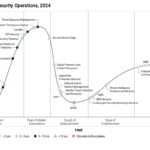Building unbreakable bonds between pixels and protection in the era of digital ownership.
Introduction: A New Epoch of Entertainment
The digital realm of pixels has long been an entertainment hub across generations. Gaming, a fundamental part of this realm, has transitioned from basic blocks to globally distributed multiplayer experiences for Generation Alpha, while earlier cohorts have witnessed the evolution from the inception of worldwide gaming.
The Digital Diaspora: From Blocks to Battles
For many, gaming isn’t merely entertainment; it’s a profound passion and a potential career path. According to research by Newzoo, a staggering 94% of young individuals engage in gaming, highlighting its pervasive influence.

Beyond Play: The Multifaceted Impact of Gaming
The gaming industry, far from being solely a form of entertainment, has extended its impact to practical life. It serves as a bridge between generations, enhancing social and communication skills and even providing career opportunities.
Gaming and Web3: A Symbiotic Evolution
As we anticipate the evolution of Web3, significant advancements are expected in the gaming landscape, necessitating a bolstered IT infrastructure to support the industry’s growth.

Charting the Web3 Waters: Gaming’s Next Frontier
However, concerns regarding player safety and infrastructure security arise with these advancements in Web3Gaming security.
Protecting Players: The Heart of Gaming Security
In the realm of multiplayer gaming, encounters with toxicity from other players, server crashes, lags, and cheating have become common occurrences. The rise of multiplayer games has exacerbated these safe gaming issues.

Safe Play: Upholding the Integrity of Digital Experiences
Development teams are working tirelessly to create a secure gaming environment for genuine players, emphasizing the critical need for established standards to ensure player safety and uphold the integrity of the gaming experience.
Gaming Infrastructure: The Backbone of Safe Gaming
The infrastructure behind gaming is more than just the skeleton upon which digital worlds are built; it is the very foundation that ensures these realms remain secure and resilient. As the IT industry evolves, leveraging hybrid systems that blend on-premises and cloud-based solutions for enhanced scalability and flexibility, the gaming industry follows suit. This approach not only accommodates the surging demand for expansive, immersive gaming experiences but also introduces complex security challenges that must be meticulously managed to protect the vast ecosystems where players interact and transact.

Digital Defenses: IT’s Role in Gaming’s Safe Future
Many games now operate via cloud systems, rendering them susceptible to cyber threats, mirroring the vulnerabilities faced by game infrastructure companies. The IT industry’s expertise in managing cloud environments is increasingly vital in gaming, where many platforms now rely on cloud services for multiplayer hosting, data storage, and streaming. With this reliance comes the risk of cyber threats such as data breaches, unauthorized access, and account hijacking. However, cybersecurity’s role is thus to enforce strong security protocols like two-factor authentication, encryption, and regular security patches to ensure a safe gaming environment, which are crucial in protecting these cloud-based gaming systems and the personal information they hold.
Unified Game Safety: A Dual Benefit
Given that most games require personal and financial information from players, it is the responsibility of gaming companies to safeguard this sensitive data. In the context of unified game safety, the convergence of player protection and data security provides a dual benefit. For example, when a game incorporates end-to-end encryption for in-game communication and transactions, it protects the player’s personal chats and financial information from potential eavesdropping or fraud. This not only instills confidence in players but also enhances the reputation of the gaming company, encouraging a more engaged and loyal user base.
Dual Shields: Protecting Players and Developers
Protecting player information is as crucial as ensuring a secure gaming environment. Ensuring the privacy and security of player data is a shared priority for players and game developers alike. The implementation of rigorous data protection strategies, like the use of secure and compliant payment processing systems that adhere to standards like PCI DSS (Payment Card Industry Data Security Standard), serves to shield players’ financial transactions. Concurrently, Web3Gaming security has strong intellectual property protections, such as anti-piracy technologies and copyright enforcement, that preserve the value of the developers’ creations, securing their revenue and the authenticity of the gaming experience.
Community and Standards: Shaping the Future Together
The landscape of games spans across various devices — PCs, tablets, and mobile phones — each with its distinct architecture. The safety of a game is mutually beneficial for both players and game companies. The multiplicity of gaming platforms necessitates a unified approach to security standards that transcends device boundaries. Whether a game is played on a high-end PC, a handheld tablet, or a smartphone, the integrity of the gaming experience must remain consistent. This is where community input becomes crucial — players and developers must collaborate to establish and adhere to security benchmarks that ensure safety across all devices. By doing so, they not only safeguard the individual’s gaming session but also contribute to the overall trust in, and the sustainability of, gaming companies. For example, community-driven platforms like dedicated chat channels, forums, Twitter Spaces, Live Video and social media can be instrumental in identifying security flaws and spreading best practices, ensuring that standards evolve in line with new threats and technologies.
Together We Fortify: The Community’s Role in Game Security
However, when a game installed on a device lacks safety measures, it becomes an inconvenience for the player and detrimentally affects the player-company relationship. When a game lacks robust security protocols, the repercussions extend beyond the individual to impact the entire gaming ecosystem. The community’s role is thus not passive; it is an active defense mechanism against potential threats. Players often serve as the first line of defense, identifying and reporting security loopholes that could lead to data breaches, compromised accounts or stolen digital assets. Moreover, a community that is educated about the importance of game security is less likely to fall prey to common cyber threats like phishing scams, thus maintaining a healthier gaming environment. Game companies can foster this partnership by providing clear channels for reporting issues, offering rewards for bug reports, and engaging directly with the community to build a culture of security that protects both the user experience and the company’s reputation.
Unity in Defense: Crafting Cybersecurity Bedrock for Web3 Gaming
As the gaming industry advances into the Web3 era, with players acquiring digital assets that carry tangible value, the imperative for robust, industry-wide cybersecurity standards becomes ever more critical. The underlying game code and supporting IT infrastructure represent the bulwarks against threats, requiring an unyielding commitment to security from the initial design to the end-user experience. This commitment must manifest in comprehensive smart contract audits, real-time security monitoring, and a proactive cybersecurity culture that evolves with emerging threats. By establishing stringent, universally adopted cybersecurity protocols, the gaming industry can ensure the integrity of digital asset ownership and create a fortified environment where trust in the virtual economy is as solid as that in the physical world.
Conclusion: The Vanguard of a Secure Gaming Realm
Therefore, it is imperative for game companies to diligently inspect servers and code for any vulnerabilities, bugs, or backdoors in the games they offer. The safeguarding of games for the company and the gaming environment for players represents a symbiotic relationship between the two entities. It’s not solely the responsibility of one but a collaborative effort for the community at large.
A Call to Arms: Securing Our Shared Digital Destiny
Establishing stringent standards is pivotal for the upcoming Web3Games to not only be more enjoyable but to potentially burgeon into a billion-dollar industry. To facilitate industry growth and community enjoyment, new rules and regulations for games and players are crucial. This is especially true for Web3Gaming, as players and games will own digital assets, like tokens and NFTs that will have a liquid value that criminals, scammers, and hackers will target. The impacts of this would be detrimental to the community and games as their top players, streamers, or influencers could end up losing their in-game assets. The sentiment after events like this could seriously damage brands.




